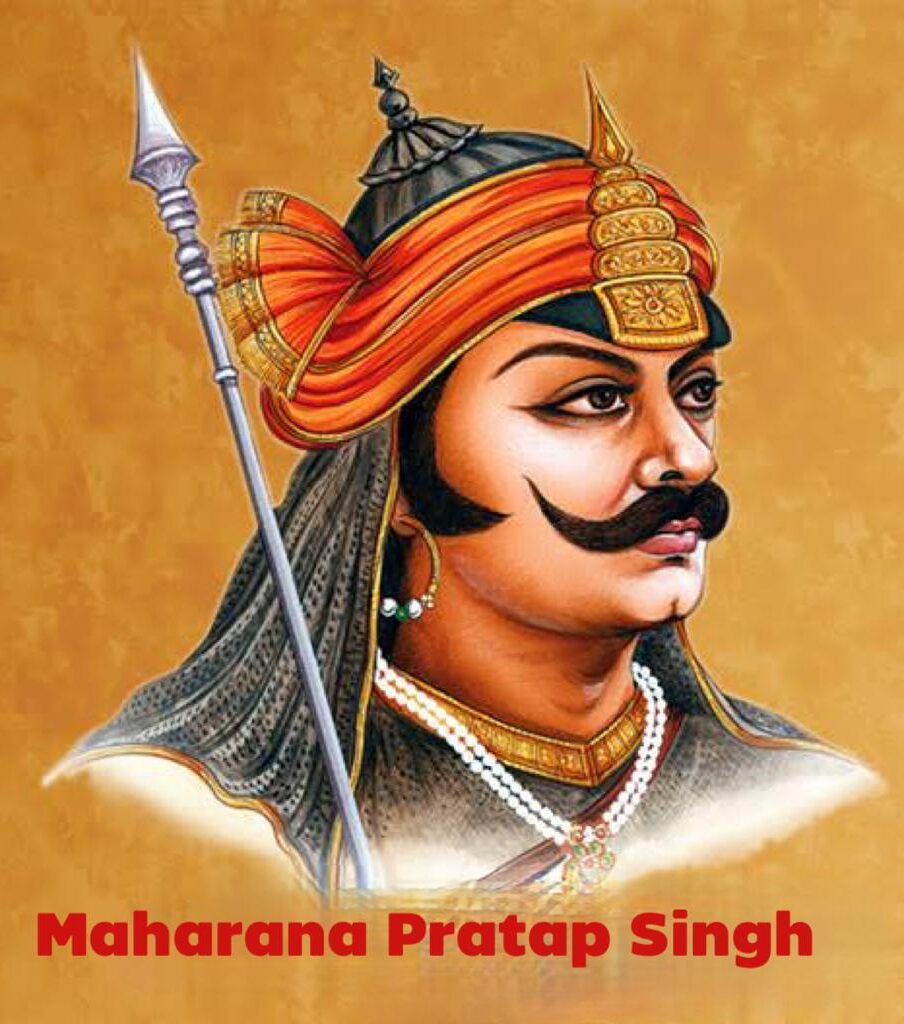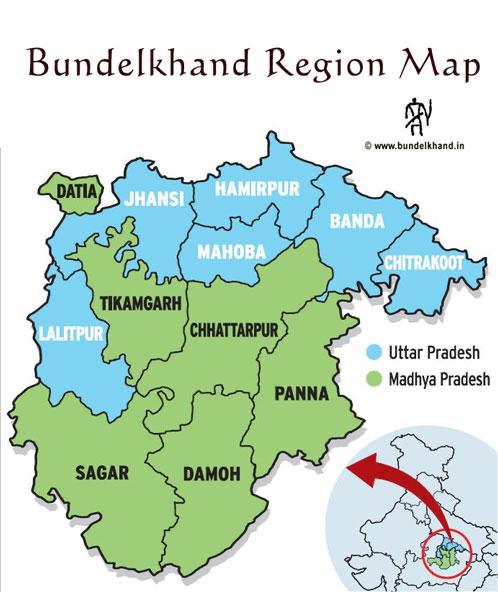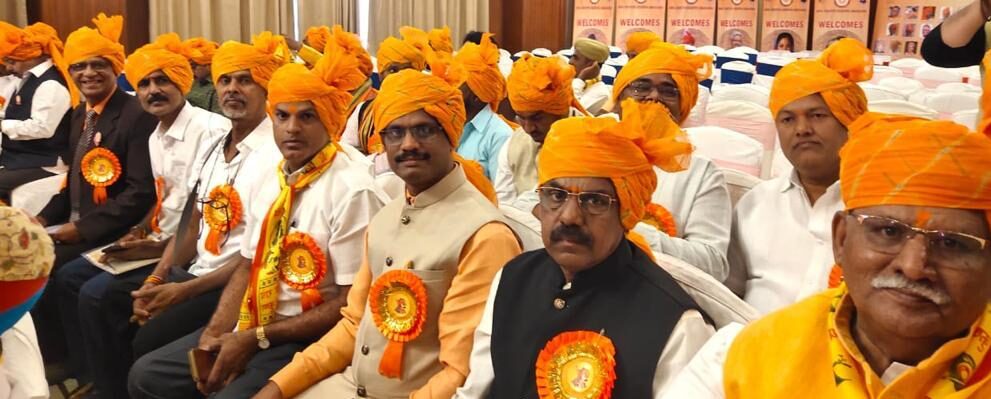



History
Rajput Community (Nation View)
Rajput community is representative of the old warrior or Kshatriya class of India. Rajputs are considered as the second of the four castes of Hinduism. It is believed that they were made from the arms of Lord Brahma. There are over 200 million Rajputs in India. Rajasthan is their original home but they are also settled in other parts of the country like Jammu & Kashmir, Himachal Pradesh, Haryana, Madhya Pradesh, Uttar Pradesh, Bihar, Orissa, Gujarat, Maharashtra and South India.
Rajput community rose to fame between 9th and 11th centuries. They are divided into three main lineages. It is said that the Rajputs ruled over 400 of approximate 600 princely states at the time of independence of the country in 1947.
Rajputra is a Sanskrit word and is found in several ancient texts, like Vedas, Ramayana, and Mahabharata. The word Kshatriya was commonly used for Vedic community consisting of rulers and warriors. The word Rajputra was used for differentiating Kshatriyas from royal warriors. It literally means son of a king. Eventually, the term Rajputra was shortened to Rajput and slowly it became a caste of India. Thakur is the common title of Rajput. There are 36 Rajput clans tracing their mythical descent from the sun, the moon and the sacred fire, known as the Suryavanshi, Chandravanshi and Agnivanshi respectively.
Bravery, chivalry, loyalty, beauty, feuds, assassinations, wars – all these abound in the history of the Rajputs. The Rajputs considered war and governance as the highest arts of all but among them have been poets, scientists, musicians and architects.
Rajput Kings:
The history of Rajputs is dotted with tales of bravery and compassion. They have always proved to be the best of friends. There was a tradition in many Rajput states of having at least one Muslim amongst their social chiefs. Honesty and honour were and still are the building stones for the Rajput community.
Maharana Pratap or Pratap Singh was the ruler of Mewar, a region in Rajasthan. In popular Indian culture, Pratap is considered to exemplify the qualities like bravery and chivalry to which Rajputs aspire, especially in context of his opposition to the Mughal emperor Akbar.
The struggle between Rajput confederacy led by Pratap Singh, and the Mughal Empire under Akbar, has often been characterised as a struggle between Hindus and the invading hordes of Muslims, much on the same lines as the struggle between Shivaji and Aurangzeb a little less than a century later.
Maharana Pratap was a staunch patriot. Pratap is said to have lamented that “If there had been no Uday Singh between himself and Rana Sanga, he would not have let Turks master Hindustan.” Pratap Singh’s dogged resistance, even when he had to wander in the jungles of Aravalli and his persistent refusal to surrender even after being reduced to starvation while pursuing Haldi Ghati, do not point to a person who fought for power politics, but rather to a person with a sacred mission.
His own vow giving up all comforts of palace life till he recaptured all his kingdom from Mughals and his lifelong observance of that vow also speak of his steadfast patriotism and determination rather than power politics. Prithviraj Chauhan was a king of the Hindu Chauhan (Chauhamana) dynasty, who ruled the kingdom of Ajmer and Delhi during the latter half of the 12th century.
Prithviraj Chauhan belonged to the Rajput Chauhan clan, which according to a legend mentioned in later manuscripts of Prithviraj Raso was part of Agnivanshi Rajputs, derived its origin from a sacrificial fire-pit. Chauhan was the last independent Hindu king to sit upon the throne of Delhi. Prithviraj Chauhan defeated the Muslim ruler Shahabuddin Muhammad Ghori in the First Battle of Tarain in 1191 and set him free as a gesture of mercy. Gauri attacked for a second time the next year, and Prithviraj was defeated and captured at the Second Battle of Tarain (1192).Sultan Gauri took Prithviraj to Ghazni and blinded him, legend states that in an archery show, Prithviraj’s poet Chand Bardai gave him the physical location of Ghori in the arena via 99poem and then as Ghori ordered the start of show, Prithviraj shot him dead with a Shabdbhedi-baan. After his defeat Delhi came under the control of Muslim rulers.
Rajput Bondil Community Migration To South India
We are said to have come from Bundelkhand in Madhya Pradesh, about 200-250 years ago, mainly to escape our conversion at the hands of Muslim rulers. Afterwards, we settled in different parts of south India our community derived its name as Bondili. The Bundelas were army generals and soldiers of Orchha kingdom in Bundelkhand. When Mughals invaded Orchha they lost huge number of soldiers in the battle but still managed to capture Bundelkhand after multiple attempts, and forcefully Bundela and other clans like Thakurs, Chowhans and Sisodia soldiers were taken into Mughal army.
Mughal army was consisting of Islam and Hindu (Rajput clans) soldiers. The name got corrupted to “Bondili” in southern India. This is how ‘Bundela’ and ‘Bondili’ words are related. The empires region included today’s states of Karnataka, Andhra Pradesh, Telangana, Tamil Nadu, Kerala, Goa and Pondicherry. If you are wondering why Bundela Rajputs and other Hindus were defeated by Mughals, it is because Hindu kingdoms/empires were lacking unity because of diversified languages, food habits etc.
Mughals/Islamic soldiers were in numbers equivalent to just 1–3 Hindu empire soldiers, if all the Hindu empire’s armies have collaborated as one army, we could have kept clear from Mughal invasion. But, in 1800s the British took control of India from Mughals till 1947.
Famous freedom fighter Rani Lakshmi Bai (Jhansi ki Rani) was from Bundelkhand region she managed to kill many British India army generals and soldiers but unfortunately during a battle she was martyred in 1858.
According to 2005 census Bondili community is minor in southern India, hence state govts classified as ‘backward caste'(BC). But, Bundelas/Bundelis in north are remaining in ‘upper caste’
Bondilis were settled down south for centuries together, So the Hindi dialect has changed, Bondilis got influenced with southern culture in various aspects, like food habits, dressing style, marriage style, festivals, deities they worship
Today most of the Bundelkhand region lies in Madhya Pradesh and partially in Uttar Pradesh and Chhattisgarh.

Tamil Nadu Rajput Bondil King
Background:
The Mughal Empire defeated the Maratha Empire at Gingee in February 1698. In return for military services, the Mughal Emperor Aurangzeb, granted a mansab rank of 2,500 and jagir land grant of 12 lakhs (1,200,000) to Raja Swarup Singh, a Bundela Rajput chieftain, along with the kiladari (fort commandership) of Gingee in 1700 AD. Raja Swarup Singh died of old age in 1714 AD. Differing accounts have the Nawab of Arcot, Saadatullah Khan I somewhat recalcitrant to the Mughal Empire, and the terms of the grant from Aurangzeb were disputed, nevertheless a debt was claimed after Aurangzeb’s death … a debt that the Raja refused to pay, eventually the arrears of payments due amounted to 70 lakhs rupees (7 million), and being a defaulter for ten years; the Nawab of Arcot reported this matter to the Mughal Emperor at the time, Bahadur Shah I at Delhi. Hearing about the death of his father, Desingh, the newly married son of Raja Swarup Singh, started for Gingee from Bundelkhand, his ancestral home.

Battle for Gingee:
Traditional plays and ballads are sung in and around Gingee about the gallantry displayed by Desingh at the young age of 22, against the more powerful Nawab Sadatulla Khan of Arcot in a struggle that was unmatched from the outset (Desingh’s army consisted of only 350 horses and 500 troopers, while the Nawab’s army had 8,000 horsemen and 10,000 sepoys). Desingh eventually died in battle and his small army was defeated. His young wife committed Sati on his funeral pyre. However, the fortress of Gingee lost its pre-eminent position and political importance within a few years of the extinction of the Rajput rule.


Our Rajput Bondil Community’s Traditions
Our community calls itself Rajput Bondili or Thakur or Bondili but other communities refer us to as Rajput. The name Rajput is derived from the Sanskrit term ‘Rajputra’, son of a ruler. There are two subgroups, viz., Surya vamsam and Chandra vamsam. A majority amongst us belong to the former group. Hindi is our mother tongue. We, however, speak the concern regional languages.
We Rajput Bondili are nonvegetarian, However, the Chandra Vamshi Bondili also called Rajput Brahman, are vegetarians. To regulate marriage alliances and indicate one’s ancestry are the functions of gotram and surname, respectively. Most men affix with the term ‘Singh’ to our names. Females suffix their name with the term ‘Bai’. Self-perception of our community by other communities is medium in the local social hierarchy. We are aware of the varna system and recognise our place as Kshatriya.
Gotram exogamy and community endogamy are the rules of marriage among the Rajput Bondili. Cross-cousin marriages are allowed. Monogamy is the norm. Lacha (made up of gold with black beads), sindhur (Vermilion) and nathada (nose stud) are the symbols of married women. In the marriage procession (barath), only male members of the bridegroom take part and bring the bride. Marriage rituals are initiated by the tikah ceremony, in which exchanges of dresses, gifts for the bride and bridegroom takes place, followed by janoyi and barath.
The bridegroom dressed with neemajama (consisting of dhoti and jubba immersed in turmeric water) with sendi kapatta (palm leaf) on the head like cap, and the bride dressed in sari immersed in turmeric water make seven rounds of the sacred fire.
Our Rajput Bondili dead are cremated. Usually, either the eldest or youngest son leads the death procession. Ashes are collected on the third day and disposed of in a nearby river or stream. Daskoram is performed on the tenth day of death and pollution comes to an end with the performance of urmesaath on 13th day by feeding Brahman priests, relatives and friends.
The traditional occupation of agriculture has been retained by a few Rajput Bondili. Nowadays, service in government or private institutions, is the primary and principal source of livelihood. Some do petty business. We are mainly a landless community.
We, Rajput Bondili’s origin and migration of the community, gotram and surnames are recalled in our folk-tales. Women sing folk-songs called dholak ke gane in Hindi during marriage rituals and during Holi and Dussehra festivals. As petty businessmen and agriculturists, Rajput Bondili maintain socioeconomic relations with all the communities. We have few traders, administrators and members in defence services. But a few hold white-collar jobs in government or private offices. There are few doctors or engineers in the Rajput Bondili.
JAI HIND
செஞ்சி ராஜாவைத் தெரியுமா…!
நமது விழுப்புரம் மாவட்டத்தில் இருக்கும் செஞ்சி கோட்டைக்கு எத்தனையோ முறை நாம் சென்று வந்திருப்போம். அந்த செஞ்சி கோட்டையின் ராஜா “தேசிங்கு” என்று சொல்ல கேட்டிருப்போம். அவரைப் பற்றி நம்மில் சிலருக்கு தெரிந்திருக்கலாம், தெரியாதோருக்காக அவரது கதை இதோ…
இந்தியாவின் தென்பகுதி வரை தங்களின் ஆட்சியை முகலாயர்கள் விரிவுபடுத்திய காலகட்டத்தில், அவர்களின் வெற்றிக்கு உறுதுணையாக இருந்தவர் சொரூப் சிங் என்ற ராஜபுத்திர வீரன். அதற்கு கைமாறாக சொரூப் சிங்கை 17 ஆம் நூற்றாண்டில் செஞ்சியை ஆட்சிபுரிய முகலாயர்கள் தேர்வு செய்தனர். இவரின் மகன் தேஜஸ் சிங் (தேசிங் ராஜா).
சொரூப் சிங் தனது நண்பர் முகமதுகான் வைத்திருந்த நீலவேணி என்ற குதிரையை அடக்க டெல்லி சென்றிருந்தார்.அந்த குதிரையை அடக்க முடியாத காரணம் காட்டி அவர் சிறை வைக்கப்பட்டார். இதை அறிந்த தேசிங்கு டெல்லி சென்று அக்குதிரையை தனது 15 -வது வயதில் அடக்கினார். இதை கண்டு வியந்த டெல்லி பாதுஷா, தனது சேனை தலைவர் பீம் சிங் மகள் ராணி பாய் என்ற பெண்ணை, தேஜஸ் சிங்கிற்கு திருமணம் செய்து வைத்து, சொரூப் சிங்கை விடுவித்தார். கூடவே நீலவேணி குதிரையையும்வ் பரிசாக அளித்தார்.
சொரூப் சிங் இறக்கும் போது டெல்லி அரசுக்கு செலுத்தவேண்டிய 70 லட்சம் ருபாயை செலுத்தாதலால், தேசிங் முடிசூட்டிக் கொள்வதை பாதுஷாவின் பிரதான தளபதி ஆற்காடு நவாப் எதிர்த்தார்.தனது பரம்பரை உரிமையை விட்டுக் கொடுக்காத தேசிங்கு தனக்கு தானே
முடிசூடிக் கொண்டார். அவரது தந்தையின் நண்பன் முகமதுகான் அதற்கு ஆதரவாக நின்றார். இதனால் ஆற்காடு நவாப் சதயத் உல்லாகானுக்கும், ராஜா தேசிங்குக்கும் உரசல் ஏற்ப்பட்டது. கப்ப தொகையை கேட்ட நவாப்பிடம் “கப்பம் செலுத்த முடியாது” என கூறியதால் போர் மூளும் அபாயம் ஏற்ப்ப்ட்டது.
முகமது கான் தனது திருமணத்திற்காக வழுதாவூர் சென்றிருந்தார். இந்த நேரத்தில் போர் தொடுத்தால் தேசிங்கு அடிபணிய வாய்ப்புண்டு என்று எண்ணிய நவாப், போர் அறிவித்து செஞ்சி கோட்டையை முற்றுகையிட்டார். இதை அறிந்த முகமது கான் தன் திருமணத்தை நிறுத்திவிட்டு, தேசிங்கின் படை தளபதியாக போரிட்டு வென்று தனது படையுடன் திரும்பிக் கொண்டிருந்த போது, மறைந்திருந்த ஒருவனால் குறுவாளால் குத்திக் கொல்லப்பட்டார்.
இதை அறிந்த தேசிங்கு ராஜா தானே போர்களத்திற்கு வந்தார். அப்போது பீரங்கி குண்டுகள் பொழிய நடந்த போரில், நீலவேணி குதிரை கால்கள் வெட்டப்பட்டு கொல்லப்பட்டது.தன்னை எப்படியும் சுட்டு கொன்று விடுவார்கள் என கருதிய ராஜா தேசிங்கு, செஞ்சி அருகே கடலி கிராமத்தில் தன் வாளை வானத்தில் எறிந்து மார்ப்பை காட்டி வீர மரணம் அடைந்தார்.அவரது மரணம் 03.10.1714 அன்று நடந்ததாக சொல்கிறது வரலாற்று ஆய்வேடு. அப்போது ராஜா தேசிங்கிற்கு வயது 18. இதை அறிந்த ராணி பாய் உடன் கட்டை ஏறி விட்டார்.
வீர மரணம் அடைந்த ராஜா தேசிங்கின் உடலை அப்படியே விட்டு செல்லாத ஆற்காடு நவாப் சதயத் உல்லாகான் செஞ்சிக்கு கொண்டு வந்துஅரசு மரியாதையுடன் அடக்கம் செய்தார்.
தேசிங்கின் வழி வந்தவர்கள் இன்றைக்கும் விழுப்புரம் மாவட்டத்தில் பொந்தில் (ரஜபுத்) என்ற பெயருடன் வாழ்கின்றனர். அவர்கள் தேசிங்கிற்கு சிலை எழுப்ப வேண்டும் என்ற கோரிக்கையும் வைத்து வருகின்றனர். அதை அண்மை காலமாக பாஜாக வினரும் முன்மொழிந்து வருகின்றனர்.
(நன்றி: தி இந்து தமிழ் நாளிதழ் 03.01.2021)
